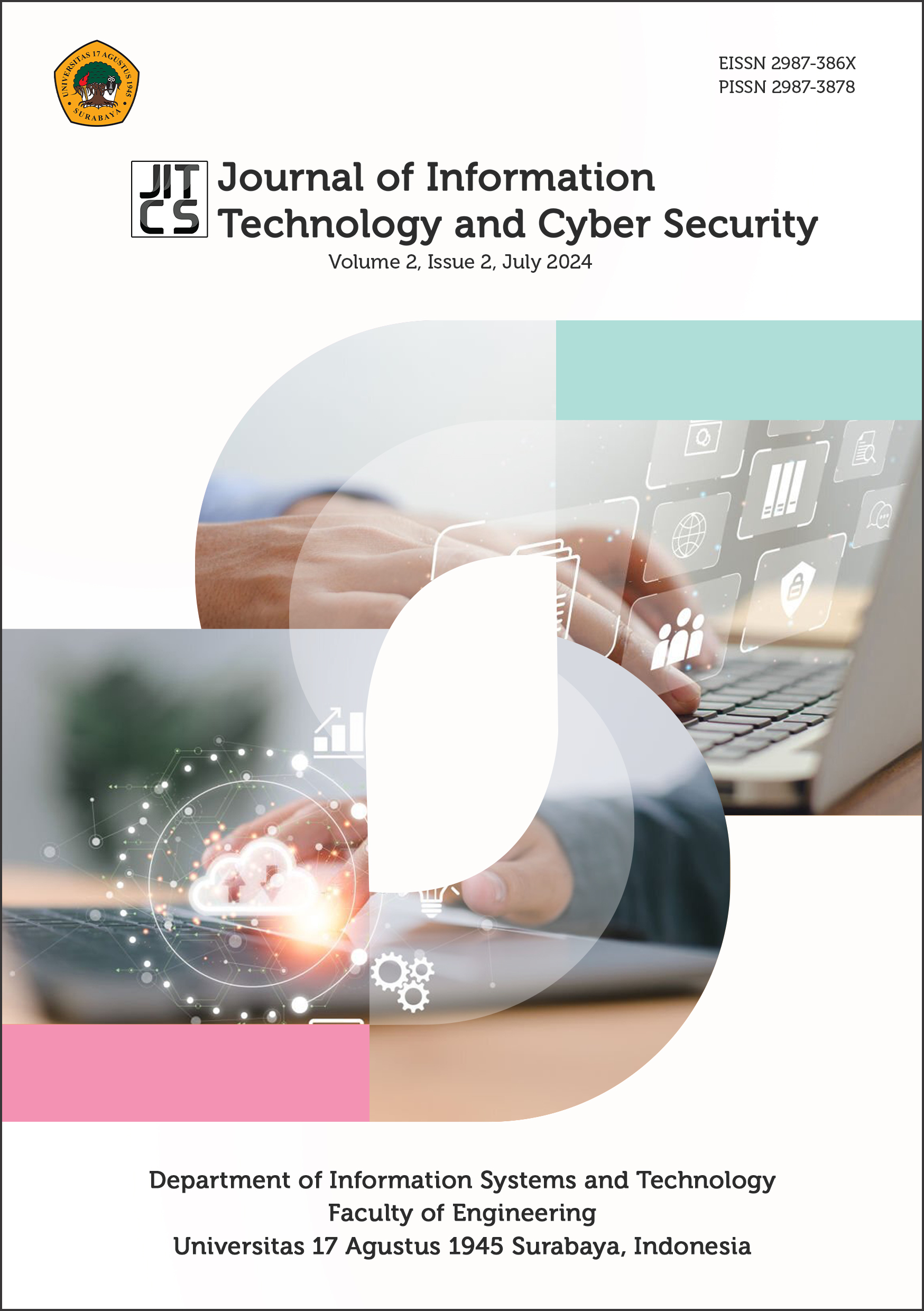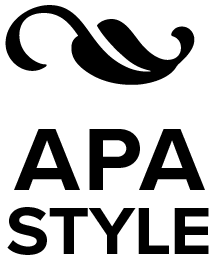Enhancing Project Management and Monitoring with Precedence Diagram and Earned Value Method: A Case Study in Construction
Abstract
An increasing number of projects has created challenges in effectively planning, organizing, and maintaining projects. Project planning becomes a crucial aspect of project management, particularly for monitoring progress and efficiently allocating resources. This study aims to implement the precedence diagram and earned value methods to enhance project management and monitoring. The predence diagram method is used to estimate project completion time, while the earned value method tracks time and budget according to project progress. In this case study, project management activities at CV. Firman Syah are observed. The development process starts with data collection and requirements analysis (functional and non-functional), followed by system architecture design using use case diagrams and Data Flow Diagram (DFD). The database is implemented using MySQL, and the application runs on an Apache web server. Vue.js is used for front-end development, while Lumen is employed for back-end development. The results of Black Box testing indicate that the application is capable of predicting project completion time and associated costs, as well as managing project data.
Downloads
References
Andreas, A., Tinumbia, N., & Anggraini, E. (2023). Construction Project Control Analysis Using Earned Value Management, Earned Schedule Management, Earned Duration Management: Case Study - Highrise Building Project in Jakarta. Jurnal Infrastruktur, 9(2), 87-98. Retrieved from https://journal.univpancasila.ac.id/index.php/infrastruktur/article/view/4943
Arifin, M. F., Sarifatuzzuhriyah, M., & Liu, S. S. (2023). Cost and Time Control Analysis with Earned Value Method in the MRT-Hub Building Construction. Jurnal Teknik Sipil dan Perencanaan, 25(1), 90-99. doi:https://doi.org/10.15294/jtsp.v25i1.43043
Booz Allen Hamilton. (2015, Jun 30). Earned Value Management Tutorial Module 5: EVMS Concepts and Methods. Virginia, United States. Retrieved from https://www.energy.gov/sites/prod/files/2017/06/f35/EVMModule5_0.pdf
Chen, S.-M., Griffis, F. H., Chen, P.-H., & Chang, L.-M. (2013). A framework for an automated and integrated project scheduling and management system. Automation in Construction, 35, 89-110. doi:https://doi.org/10.1016/j.autcon.2013.04.002
Darmawan, D., & Ratnasari, A. (2020). Rancang Bangun Sistem Informasi Manajemen Proyek Berbasis Web pada PT. Seatech Infosys. Jurnal Sisfokom, 9(3), 365-372. doi:https://doi.org/10.32736/sisfokom.v9i3.931
Dinas Pendidikan Dan Kebudayaan Kota Balikpapan. (2015, March 4). Monitoring dan Evaluasi. Retrieved from Dinas Pendidikan Dan Kebudayaan Kota Balikpapan: http://disdik-balikpapan.net/disdik/monitoring.php
Ghoddousi, P., Eshtehardian, E., Jooybanpour, S., & Javanmardi, A. (2013). Multi-mode resource-constrained discrete time–cost-resource optimization in project scheduling using non-dominated sorting genetic algorithm. Automation in Construction, 30, 216-227. doi:https://doi.org/10.1016/j.autcon.2012.11.014
Johari, G. J., & Islami, N. N. (2021). Analisis Biaya dan Waktu menggunakan Metode Earned Value Concept pada Proyek Mbe Well Hook Up. Jurnal Konstruksi, 19(1), 325-335. doi:https://doi.org/10.33364/konstruksi/v.19-1.973
Kamaludin, T. M. (2021). Best Parctice Pengendalian Biaya Dan Waktu Menggunakan Earned Value Concept. Indramayu, Indonesia: Adab.
Koilam, F. E., Dundu, A. K., & Arsjad, T. T. (2020). Perencanaan Waktu Penyelesaian Proyek Pembangunan Hotel Marron Resort Tomohon dengan Menggunakan Precedence Diagram Method. Jurnal Sipil Statik, 8(5), 749-754. Retrieved from https://ejournal.unsrat.ac.id/v3/index.php/jss/article/view/35033
Konior, J., & Szostak, M. (2023). Course of planned, actual and earned cost curves of diverse construction. International Journal of Construction Management, 23(5), 865-876. doi:https://doi.org/10.1080/15623599.2021.1942769
Nono, Y., Pratasis, P. A., & Malingkas, G. (2019). Analisis Metode Nilai Hasil Terhadap Waktu dan Biaya pada Proyek Office and Distribution Center, Airmadidi, Minahasa Utara-Manado. Jurnal Sipil Statik, 7(11), 1465-1477. Retrieved from https://ejournal.unsrat.ac.id/index.php/jss/article/view/26067
Romadhona, S., Kurniawan, F., & Tistogondo, J. (2021). Project Scheduling Analysis Using the Precedence Diagram Method (PDM) Case Study: Surabaya's City Outer East Ring Road Construction Project (Segment 1). International Journal of Engineering, Science and Information Technology (IJESTY), 1(2), 53-61. doi:https://doi.org/10.52088/ijesty.v1i2.56
Safitri, E., Basriati, S., & Hanum, L. (2019). Optimasi Penjadwalan Proyek Menggunakan CPM Dan PDM (Studi Kasus: Pembangunan Gedung Balai Nilah Dan Manasik Haji Kua Kecamatan Kateman Kabupaten Indragiri Hilir). Jurnal Sains Matematika dan Statistika, 5(2), 17-25. Retrieved from http://ejournal.uin-suska.ac.id/index.php/JSMS/article/view/7631
Sahid, M. N., & Sumarno, S. (2013). Evaluation and Time Control, Cost Using Backup of Time Reserved Management Method. Eco Rekayasa: Jurnal Teknik Sipil, 9(1), 59-68. Retrieved from https://publikasiilmiah.ums.ac.id/handle/11617/3045
Sugiyanto, S. (2020). Manajemen Pengendalian Proyek: Perubahan Paradigma dalam Menghadapi Belenggu Tugas Akhir. Surabaya, Indonesia: Scopindo Media Pustaka.
Sukamto, R. A., & Shalahuddin, M. (2011). Modul Pembelajaran Rekayasa Perangkat Lunak (Terstruktur dan Berorientasi Objek). Bandung, Indonesia: Modula.
Yanti, N. P., & Kusumastuti, P. C. (2021). Manajemen Operasi: Manajemen Proyek. Badung, Indonesia: Universitas Udayana.
Yudha, A. M., & Cahyono, A. B. (2022). Pengembangan Back End Menggunakan Laravel Lumen (Studi Kasus: Teknologi.id Event). Automata, 3(2). Retrieved from https://journal.uii.ac.id/AUTOMATA/article/view/24200
Yudhanto, Y., & Prasetyo, H. A. (2019). Mudah Menguasai Framework Laravel. Jakarta, Indonesia: Elex Media Komputindo.
Copyright (c) 2024 The Authors

This work is licensed under a Creative Commons Attribution-NonCommercial-NoDerivatives 4.0 International License.
Copyright Notice based on COPE (Committee on Publication Ethics) for JITCS: Journal of Information Technology and Cyber Security
-
Ownership and Copyright:
- JITCS: Journal of Information Technology and Cyber Security respects the intellectual property rights of authors. The copyright for individual articles published in JITCS is retained by the respective authors, unless otherwise specified.
- The articles published in JITCS are licensed under a Creative Commons Attribution-NonCommercial-NoDerivatives 4.0 International License (CC BY-NC-ND 4.0), which permits use and distribution in any medium, provided the original work is properly cited, the use is non-commercial, and no modifications or adaptations are made.
- JITCS serves as the initial publisher of the articles, providing them with the first publication platform.
-
Permissions and Usage:
- Distribution for Non-Commercial Purposes: Permitted: Users are allowed to distribute the article for non-commercial purposes, provided the original work is properly cited and no modifications or adaptations are made.
- Distribution for Commercial Purposes: Not Permitted: The article may not be distributed for any commercial purposes without obtaining prior written permission from the author(s).
- Inclusion in a Collective Work (e.g., Anthology) for Non-Commercial Purposes: Permitted: Users are allowed to include the article in a collective work, such as an anthology, as long as the use is non-commercial and the work remains unchanged.
- Inclusion in a Collective Work for Commercial Purposes: Not Permitted: The article may not be included in any collective work or anthology intended for commercial purposes without prior permission from the author(s).
- Creation and Distribution of Revised Versions, Adaptations, or Derivative Works (e.g., Translation) for Non-Commercial Purposes: Not Permitted: Users may not create or distribute revised versions, adaptations, or derivative works, including translations, for non-commercial purposes.
- Creation and Distribution of Revised Versions, Adaptations, or Derivative Works for Commercial Purposes: Not Permitted: Users may not create or distribute revised versions, adaptations, or derivative works, including translations, for commercial purposes.
- Text or Data Mining for Non-Commercial Purposes: Permitted: Users are permitted to engage in text or data mining of the article for non-commercial research purposes, provided the original work is properly attributed.
- Text or Data Mining for Commercial Purposes: Not Permitted: Users may not engage in text or data mining of the article for commercial purposes without obtaining explicit permission from the author(s).
-
Attribution and Citation:
- Proper attribution and citation of the published work should be provided when using or referring to content from JITCS. This includes clearly indicating the authors, the title of the article, the journal name (JITCS), the volume/issue number, the publication year, and the article's DOI (Digital Object Identifier) when available.
- When adapting or modifying the published content, proper attribution to the original source should be given, and the adapted or modified content should be shared under the same CC BY-NC-ND 4.0 license.
-
Plagiarism and Copyright Infringement:
- JITCS considers plagiarism and copyright infringement as serious ethical violations. Authors are responsible for ensuring that their submitted work is original and does not infringe upon the copyright or intellectual property rights of others.
- Any allegations of plagiarism or copyright infringement will be investigated promptly and thoroughly. If proven, appropriate actions, including rejection of the manuscript, retraction of the published article, or other corrective measures, will be taken.
-
Open Access Licensing:
- JITCS supports open access publishing and encourages authors to consider publishing their work under the CC BY-NC-ND 4.0 license to promote the dissemination and use of knowledge in the field of information technology and cyber security.
- The specific terms and conditions of the CC BY-NC-ND 4.0 license will be clearly indicated on the published articles.
-
Policy Review: This Copyright Notice will be periodically reviewed and updated to ensure its continued relevance and compliance with copyright laws, ethical standards, and open access principles in scholarly publishing. Any updates or revisions to the notice will be communicated to the relevant stakeholders.
By adhering to this Copyright Notice, JITCS aims to protect the rights of authors, promote proper attribution and citation practices, and facilitate the responsible and legal use of the published content in accordance with the CC BY-NC-ND 4.0 license.




